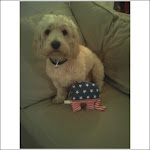An old Vanderbilt friend has been teaching in India, he sent this plea regarding some charity work.
"Over Christmas break, Ryan spent three weeks in a small village in India- Kothasatram. Here, they have no clean water (they drink whatever water they can get out of coconut juice, own two articles of clothing that they wear every day, and are homeless. Partnered with the Association of Relief Volunteers (ARV) in India, Ryan is trying to rewrite these children’s fate by launching the “Child Feeding Center.”
Read more here
Ryan's email is rc_paugh[AT]yahoo.com
Monday, February 12, 2007
Subscribe to:
Post Comments (Atom)


3 comments:
"Anyone who scoffs at the value of 62 cents should talk to Muhammad Yunus. In 1976, the Bangladeshi economics professor tried an experiment. From his pocket, he lent the equivalent of $26 to a group of 42 workers. With that 62 cents per person, they bought the materials for a dayís work weaving chairs or making pots. At the end of their first day as independent business owners, they sold their work and soon paid back loan.
Thus began the microcredit movement, which has become the worldís hot idea for reducing poverty. This month, microcreditís backers met in Washington to began to broaden the programís reach and raise money from developed nations and institutions such as the World Bank. Eight million people are now getting microcredit, half of them in Bangladesh. Microcredit proponents want to expand that to 100 million people by 2005.It is a worthy goal that the united states should supports.
The first microcredit program was the Grameen Bank, founded by Mr. yunus. Now almost all its borrowers are women, who tend to be poorer than men, have fewer opportunities and are much more likely to spend new earnings on their children, Grameen requires its borrowers to organize themselves into groups of five. All are cut off if one borrower defaults. They meet every week to make loan payments at commercial interest rates and critique one anotherís business plans. They also pledge to boil their water, keep their families small and carry out other good health practices. People who repay small and loans on time can take ones. Grameen, which now makes a profit, claims a higher repayment rate than traditional banks. One-third of its two million borrowers have crossed the poverty line and another third are close.
Microcredit is now at work in 43 countries. A version has even reached 150,000 Americans in inner-cities like Chicago and Washington. Borrowers here can begin with a $500 or$1,000 loan, enough for gardening or hair styling tools. President Clinton said he will ask congress for $ 1 billion moreover the next five years to develop microenterprise in the united states.
A no-handout, inexpensive program that builds business sounds so politically appealing in todayís climate that it is worth recalling microcreditís limits. It cannot take the place of clean water, family planning efforts and child immunization programs. It can do little for the most desperate, those too sick or unskilled to work .It is also not free , as some of its political backers suggest. The most successful microcredit program can fund their loans through interest and all are most helpful when they are backed by technical and marketing assistance programs, which cost money.
Still, microcredit has brought a much-needed revolution in anti-poverty programs. It deserves more than its current 2 percent share of the worldís $60 billion development budget. Microcredit goes directly to poor people. It creates jobs in villages. It helps women develop confidence and independence. Microcredit can win new political backing for anti-poverty programs abroad that the poor still desperately need."
The smallest of projects mean a world to those people. I wonder how many hundreds of thousands of people Yunus was able to save through his now well established bank.
The poor actually had a higher rate of paying back the money than those of traditional banks which gave out large loans.
Anyways just thought that was cool. Good luck to him.
At first I just scanned through this and saw ARV and for a second thought about that great military power and that maybe we hadn't lost the war in Ir...I mean Vietnam.
I think you posted under the wrong topic but anyways, the only similarity of Iraq and Vietnam is the reaction of the American people to the wars. Both started out with a high support percentage 70-80% and as casualties mounted the support dropped to the 30% (In Vietnam it was during Tet). I don't know exactly when we hit that point in Iraq.
Post a Comment